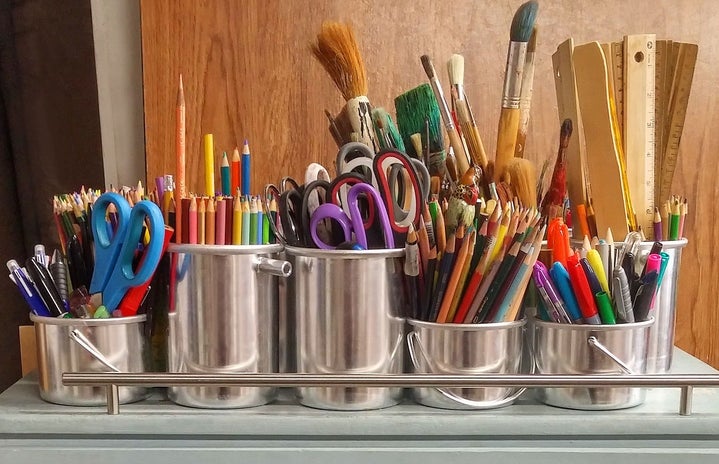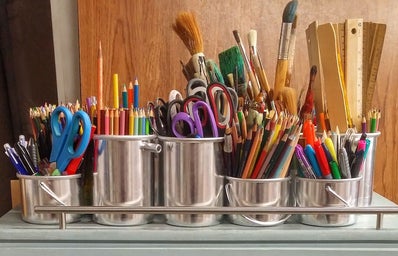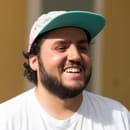With the internet being so easy to access, it has become easier for independent artists to find an audience and let their work be known. As a result, a variety of movements, collectives, and scenes have found a way to pave their path. The independent art scene in Puerto Rico is no different. Recently, many artists from a variety of disciplines have found platforms that have made it easier for them to share their work. In addition, small businesses such as Electroshock in Santurce and Rio Piedras, bars like Off The Wall in Mayaguez, book stores like La Casita Books and Gifts in Aguadilla, Libros AC in Santurce and Libros 787 online, and independent festivals like Feria de Libros Independientes y Alternativos and Tintero: Festival de Cómics y Arte Independiente de Puerto Rico have provided up-and-coming artists a space to display their talents. “Puerto Rican Women Killing It in the Independent Art Scene” is a series of interviews that provides a glimpse at some of the women who have recently gained recognition in the art scene. Though the artists are asked similar questions, some are asked queries surrounding their work, specifically.
Alejandra Nanishi is a fine art artist who creates paintings and drawings using traditional mediums like oil paint, watercolor, ink, while also experimenting with more contemporary mediums. Most of her work as she puts it “seems like a continuous exploration and through it, I do what I can to inspire people to pursue, appreciate and value the arts. Not just with my pieces, but also through educating young children and adults, at the Fundación Casa Cortés, about the integration of the arts in our lives.”
What got you into the visual arts?
Mainly my parents are the blame for my interest on the arts. My father is also a painter, musician and writer. My mother is a theater actress and writer. Although they didn’t pursue their passions, they’ve always been supportive of my sister and myself for pursuing the arts. For as long as I can remember museums have been my second home. I remember one time we were at the Museo de Arte de Ponce and they were unveiling a newly found piece by Francisco Oller. That night I met the museum director and the conservation director and I just imagined myself in their position and having their interest in conserving our history through the arts.
How did you develop your style?
It was through a lot of practice. When I look at what I started with, I can sort of see what I have now, but just under developed.
How has it evolved through the years?
I believe it still is [evolving]. With my art, I try to convey my own experiences, both personal and socially, so everything that goes around me has a big part on how my work has and keeps evolving. I do think that by becoming more conscious of everything that is happening these days, I’ve been subliminally reflecting social issues.
What are some of your influences and inspirations?
There are so many great artists throughout history that it’s always hard to pick a specific person. A lot of contemporary and classic artists take part as my influences and inspirations. On a contemporary look, artists like Gottfried Helnwein, Rafael Trelles, Kehinde Wiley, Cacheila Soto and Aixa Oliveras, always come to mind. With the classic artists, there are Diego Velázquez, Caravaggio, Renoir, Degas, Vermeer and so many others.
Is there any other form of art you wish to pursue? If so, what field and why?
I don’t know if this is a form of art specifically, but I am interested in the restoration and conservation of works of art. I’ve always been intrigued by history and how art has always been our go-to for learning and understanding our history’s trajectory as a human kind.
What do you think about the current state of the arts in Puerto Rico?
I think that there is a lack of education in the arts and this makes people believe that art is just something people randomly make and it doesn’t show them what art really does in their lives and in our society in general. I know that many artists have taken it upon them to create spaces and opportunities for themselves as artists and for other artists and I am proud of it. Yet, I still believe there is work to do so that Puerto Ricans can really value the arts.
What do you think about the current state of the independent scene in Puerto Rico?
I’m very proud of it! I’ve seen other fellow artists thrive and it’s definitely changing the game in how one perceives art.
If a young girl came up to you and said she wanted to be an artist, what would be your advice for her?
Never stop practicing. I started to draw and paint around 10 years ago and every day I keep surprising myself through practice. You have to have passion, be persistent and truly love what you do.
What is your biggest goal right now?
It probably would be to work hard so I can get my Masters in Art Restoration. Other than that, I’m working on a very ambitious personal project. After I finished my bachelors graduation thesis in 2018, talking about a lost work of Ramón Frade, I’ve been interested in highlighting lost history from Puerto Rico. But, as I mentioned, I am very ambitious and it’ll definitely be a long journey. Right now all I can say is that it has to do with Celestina Cordero.
What do you seek to achieve with work?
I think it’s different things. I want people to feel related, I want them to learn and to express themselves anytime they see my work.
All of the pictures in this article were provided by Alejandra Nanishi.


